Selection by Lou Anmella-de Montalembert
ACA project vous invite à découvrir la programmation artistique de l’automne de 10 galeries parisiennes, nomades ou venues spécialement de l’étranger pour la semaine de l’art contemporain à Paris, où la rentrée artistique bat son plein et fait la part belle à l’art contemporain d’Asie. De la Chine au Japon, en passant par la Corée, la Mongolie et l’Asie du Sud-Est, ces expositions offrent des plongées uniques dans l’univers d’artistes émergents et établis qui font vibrer la scène artistique contemporaine.
ACA project invites you to discover the autumn artistic program of 10 galleries, local, nomadic or specially invited from abroad for the Contemporary Art Week in Paris, where the artistic season is in full swing and the spotlight is on contemporary art from Asia. From China to Japan, via Korea, Mongolia and Southeast Asia, these exhibitions offer unique insights into the world of emerging and established artists who are making the contemporary art scene vibrate.
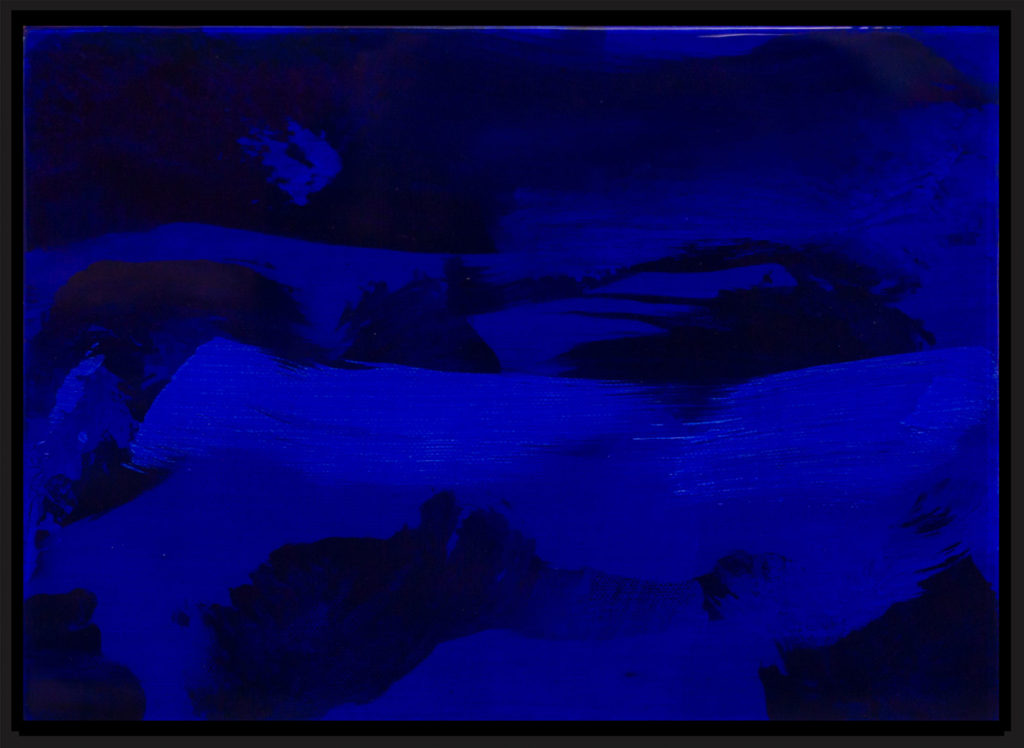
Galerie Arnaud Lebecq / « Passés composés » / Kitikong Tilokwattanotai / 07.10 – 22.10.2023 / 15 rue Guénégaud, Paris 6e
Pour sa première exposition personnelle en France et en Europe, l’artiste thaïlandais Kitikong Tilokwattanotai nous immerge dans un voyage à travers le temps. Dans cette nouvelle série, chaque œuvre est une fenêtre ouverte sur la mémoire de ses émotions, saisissant l’essence même de l’instant passé.
Son travail abstrait se caractérise par l’utilisation de procédés de création issus de l’art en Asie. Le coup de pinceau, trouvant ses origines dans la tradition de la calligraphie, constitue le fondement de sa pratique. Le pinceau et le geste associé se transforment en marqueur du moment où l’artiste se connecte avec la toile. Tilokwattanotai métamorphose ce geste en vecteur de communication où le pinceau devient le prolongement de son corps et de son âme. Tilokwattanotai utilise également la laque, matériau ancestral largement employé dans l’artisanat et l’art en Asie. Appliquée lors d’un processus long et minutieux de plusieurs semaines, la laque fige l’instant passé. Mais la laque devient aussi un révélateur de texture des couches picturales et un intensificateur chromatique des pigments. Ces effets renvoient à la profondeur de l’œuvre pour révéler l’invisible.
Cette exposition est l’occasion d’un partenariat avec la SAC Gallery, la galerie de Kitikong Tilokwattanotai en Thaïlande. SAC Gallery présentera sur la foire ASIA NOW, du 19 au 22 Octobre à la Monnaie de Paris, des grands formats du travail de l’artiste. Kitikong Tilokwattanotai est un artiste représenté par la galerie arnaud Lebecq depuis 2019.
For his first solo exhibition in France and Europe, Thai artist Kitikong Tilokwattanotai takes us on a journey across time. In this new series, each creation is a window on the memory of his emotions, capturing the essence of the past moment.
His abstract work is characterized by the use of creation techniques specific to Asian art. The brushstroke, originating in the tradition of calligraphy, is the essence of his practice. The brush and related gesture become a marker of the moment when the artist connects with the canvas. But Tilokwattanotai turns this gesture into a vector of communication, where the brush becomes an extension of his body and soul. In his creations, Tilokwattanotai is also using lacquer, an ancestral material widely utilized in Asian crafts and art. Applied in a long and meticulous process of several weeks, lacquer fixes the past moment. But lacquer also reveals the texture of the paint layers and enhances the chromatic intensity of the pigments. These effects reveal the depth of the work, bringing out the invisible.
This exhibition is the opportunity of a partnership with SAC Gallery, the gallery of Kitikong Tilokwattanotai in Thailand. SAC Gallery will present on ASIA NOW Art Fair, from OCT 19th to 22nd at la Monnaie de Paris, big size artworks of the artist. Kitikong Tilokwattanotai is an artist represented by the arnaud Lebecq gallery since 2019.
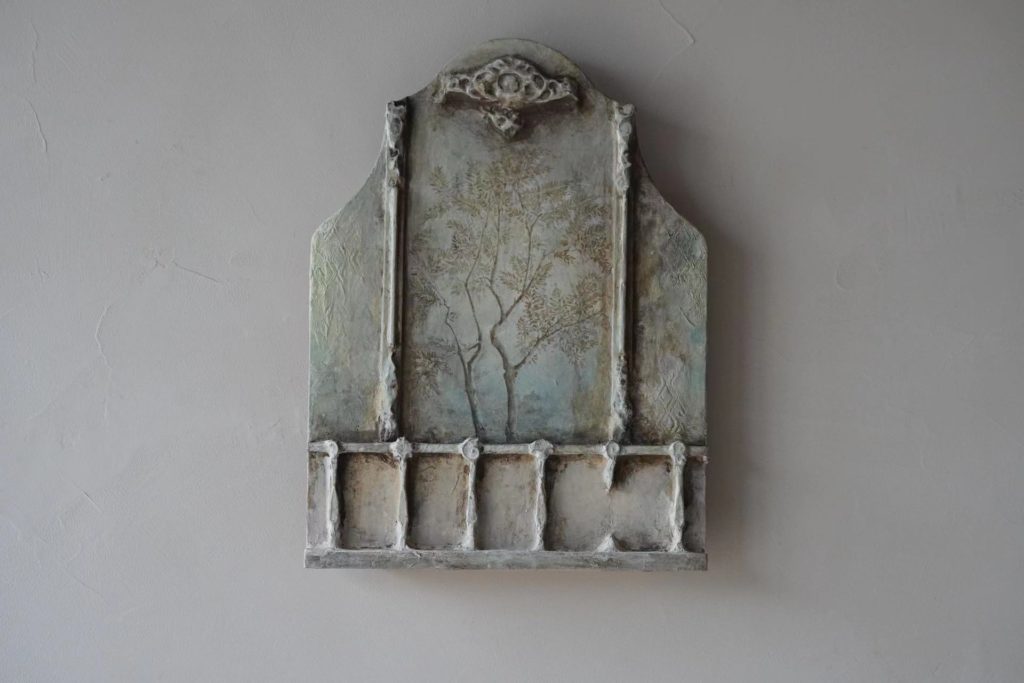
Galerie Looloolook / « Lignes et Lumières » / Mobai Lin / 05.10 – 22.10.2023 / 12 rue de la Sourdière, Paris 1er
« Lignes et Lumières », première exposition personnelle en France de l’artiste chinoise LIN Mobai, promet de transporter les visiteurs dans un monde visuel où les lignes et la lumière s’entrelacent pour créer une expérience artistique inoubliable. L’œuvre de l’artiste, imprégnée de l’esthétique de la peinture chinoise traditionnelle, explore des techniques contemporaines et des thèmes universels. Son art évoque des émotions profondes et invite les spectateurs à méditer sur la beauté et la fragilité de la nature.
“Lines and Lights”, the first solo exhibition in France by Chinese artist LIN Mobai, promises to transport visitors into a visual world where lines and light intertwine to create an unforgettable artistic experience. The artist’s work, imbued with the aesthetics of traditional Chinese painting, explores contemporary techniques and universal themes. Her art evokes deep emotions and invites viewers to meditate on the beauty and fragility of nature.
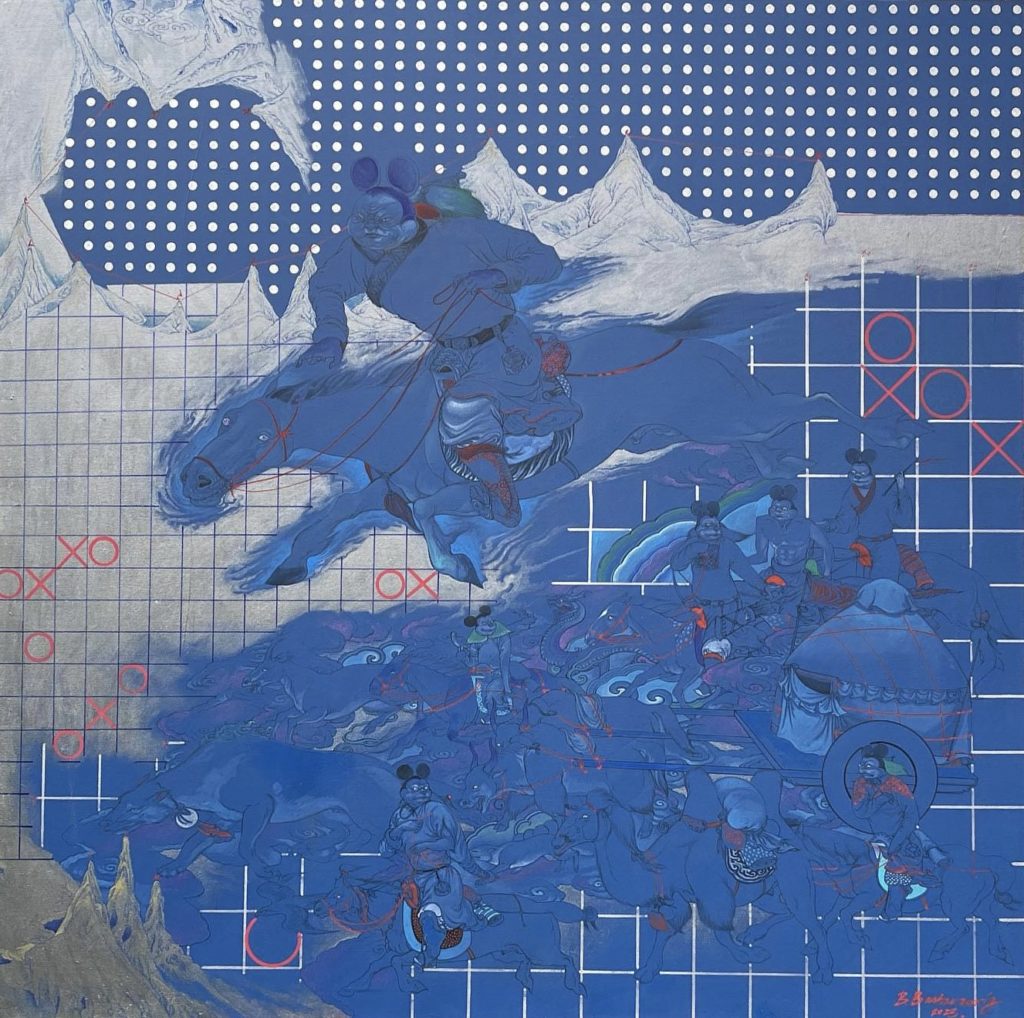
LKHAM gallery / « White Milk Paints the Blue Sky » / Baatarzorig Batjargal, Bekhbaatar Enkhtur, Chayodu, Nomin Bold, Nomin Zezegmaa, Nyam-Ochir Oyunpurev, Odonchimeg Davaadorj, Zula Tuvshinbat / 14.10 – 26.10.2023 / 13 rue de Saintonge, Paris 3e
La galerie LKHAM a le plaisir de présenter « White Milk Paints the Blue Sky », une exposition qui invite huit artistes contemporains originaires ou vivant en Mongolie à réfléchir à la manière dont ils envisagent l’avenir et à la place qu’ils y occupent. C’est la première fois qu’une galerie mongole organise une exposition d’art contemporain de cette envergure à l’étranger. Le titre évoque une ancienne pratique mongole consistant à jeter du lait vers le ciel comme une forme de bénédiction, à chaque fois que l’on traverse un pays étranger ou que l’on se lance dans un nouveau voyage ou une nouvelle phase de la vie.
Sous le commissariat de Dr Christianna Bonin, l’exposition collective multidisciplinaire présente des œuvres de Baatarzorig Batjargal, Bekhbaatar Enkhtur, Chayodu, Nomin Bold, Nomin Zezegmaa, Nyam-Ochir Oyunpurev, Odonchimeg Davaadorj et Zula Tuvshinbat. Pour eux, l’avenir s’étend entre activisme et conformisme, entre empathie et haine. Ils offrent de nouvelles perspectives sur l’art d’un pays jusqu’ici largement connu dans le monde grâce à des documentaires romancés sur la vie nomade ou l’histoire de Gengis Khan. Ensemble, leurs pratiques représentent une jeune génération de Mongols intimement liés à l’endroit où ils ont été, où ils se trouvent maintenant et où ils vont.
LKHAM Gallery is pleased to present « White Milk Paints the Blue Sky », on view from October 14 to October 26, 2023, in Paris, during the city’s biggest art week of the year. The exhibition invites eight contemporary artists from or living in Mongolia to consider how they envision the future and their place within it. It marks the first time that a Mongolian gallery has staged an exhibition of contemporary art at this scale abroad. The title evokes an ancient Mongolian practice of tossing milk towards the sky as a form of blessing, whenever crossing into a foreign land or embarking on a new journey or life phase.
Curated by Dr. Christianna Bonin, the multi-disciplinary group show features works by Baatarzorig Batjargal, Bekhbaatar Enkhtur, Chayodu, Nomin Bold, Nomin Zezegmaa, Nyam-Ochir Oyunpurev, Odonchimeg Davaadorj, and Zula Tuvshinbat. For them, the future stretches between activism and conformism, and between empathy and hate. They offer new perspectives on art from a country that has thus far largely been known to the world through romanticized documentaries about nomadic life or the history of Chinggis Khan. Taken together, their practices represent a young generation of Mongolians intimately attuned to where they have been, where they are now, and where they are going.

Galerie BAQ / « Tropical Hallucinations » / Imhathai Suwatthanasilp, Kamin Lertchaiprasert, M. Irfan, Tôn-Thất Minh Nhật, Paul Kadarisman, Phan Thảo Nguyên / 20.09 – 28.10.2023 / 15 rue Beautreillis, Paris 4e
« Tropical Hallucinations » est une exposition en deux parties présentée dans deux lieux différents, rappelant deux îles d’un archipel – la principale géoculture de l’Asie du Sud-Est – géographiquement séparées mais néanmoins étroitement liées. La première partie se déroulera sur quatre semaines à la galerie ; la seconde partie sera présentée sur quatre jours à Asia Now Art Fair du 19 au 22 octobre au pavillon NOW ON. Avec 12 œuvres de médias variés – peinture, sculpture, vidéo, installation, photographie – l’exposition explore les divers paysages religieux et de croyance de l’Asie du Sud-Est.
Les arrangements humoristiques de natures mortes de Paul Kadarisman (Indonésie) laissent le spectateur se demander s’il cherche à désacraliser, comme en Occident, ou à célébrer l’animisme, comme dans la tradition locale. Kamin Lertchaiprasert (Thaïlande) suit tranquillement sa voie bouddhiste depuis plus de 30 ans, distillant dans ses écrits et sur papier le vide de plus de 1 000 jours de méditation. Imhathai Suwatthanasilp (Thaïlande) regarde à travers des cheveux humains (littéralement !) pour observer les réactions des personnes impliquées et de l’opinion publique autour de l’insurrection du sud de la Thaïlande depuis 2004. Pendant ce temps, M. Irfan (Indonésie), faisant l’éloge de la nature, a trouvé une façon concrète (dixit l’artiste) de renouer avec elle après un long voyage dans les profondeurs de la forêt. Phan Thảo Nguyên (Vietnam) utilise une série d’images animées dans un récit fictionnel pour allégoriser la rupture de la relation entre les humains et leur environnement. S’appuyant sur son expérience d’enfance dans une famille multireligieuse, Tôn Thất Minh Nhật (Vietnam) utilise intelligemment la nature du sơn ta traditionnel (laque traditionnelle vietnamienne) pour exprimer ses réflexions sur la frontière entre le sacré et l’ordinaire.
Utilisant le cliché des climats tropicaux, souvent utilisé à mauvais escient dans de nombreux textes sur l’Orient du point de vue des voyageurs occidentaux, l’exposition lève le voile de l’exotisme pour permettre aux spectateurs de percevoir la réalité actuelle du point de vue des artistes qui y vivent et y travaillent.
Tropical Hallucinations is a two-part exhibition presented in two different locations, much like two islands in an archipelago – the main geo-culture of Southeast Asia – geographically separate but still closely related. Part I will take place over four weeks at the gallery; Part II will be shown over four short days at the Asia Now Art Fair 2023 from 19-22 October at the NOW ON Pavilion. With 12 works in a variety of media, from painting, sculpture, and video to installation and photography, the exhibition explores the diverse religious and belief landscapes of Southeast Asia.
Paul Kadarisman’s (Indonesia) humorous still-life arrangements leave viewers wondering whether he is trying to de-sacralise, as in the West, or celebrate animism, as in the local tradition. Kamin Lertchaiprasert (Thailand) has been quietly following his Buddhist path for more than 30 years, distilling the emptiness of more than 1,000 days of meditation into his writing and on paper. Imhathai Suwatthanasilp (Thailand) looks through human hair (literally!) to observe the reactions of those involved and public opinion surrounding the Southern Thai Insurgency from 2004 to the present. Meanwhile, M. Irfan (Indonesia), in praise of nature, has found a concrete (the artist’s word) way to reconnect with it after a long journey into the deep forest. Phan Thảo Nguyên (Vietnam) uses a series of moving images in a fictional narrative to allegorise the breakdown of the relationship between humans and their environment. Drawing on his experience of growing up in a multi-religious family, Tôn Thất Minh Nhật cleverly uses the nature of traditional sơn ta (traditional Vietnamese lacquer) to express his reflections on the boundary between the sacred and the ordinary.
Using the cliché of tropical climates, often misused in many texts about the East from the perspective of Western travelers, the exhibition lifts the veil of exoticism to allow viewers to perceive the ongoing reality from the perspective of artists living and working there.

Galerie Backslash / Solo Show Park Dong-soo / 02.09 – 28.10.2023 / 29 rue Notre-Dame de Nazareth, Paris 3e
La magistrale carte blanche de l’artiste coréen Park Dong-Soo au Musée national des arts asiatiques – Guimet, saluée par la critique, s’enrichit cet automne avec une exposition personnelle d’envergure à Backslash. De nombreuses années de retraite dans la campagne coréenne ont permis à l’artiste de préparer un nouveau corpus d’œuvres et d’affiner ses recherches autour de ses thèmes de prédilection : la formation de l’univers, l’explosion primitive et l’infiniment grand ou l’infiniment petit. Ses notions très pascaliennes sont transcendées par l’héritage des techniques artistiques du pays du matin calme. En effet, le travail de Park reflète cette double influence, à la fois très occidentale et profondément ancrée dans la culture coréenne.
L’artiste a vécu une dizaine d’années en France, y a effectué ses études, puis est reparti en Corée en 2008 pour y vivre près de la nature. C’est de cet ermitage nécessaire que lui vient l’inspiration duelle du chaos et de l’harmonie. En constante lutte entre ces deux ordres, l’artiste projette sa vision de la naissance du tout à travers des gestes picturaux éminents et parfaitement coordonnés, où le motif du cercle, symbole de vie à la fois planétaire et intra-utérin, tient le rôle principal.
La souveraineté du noir dans les œuvres de Park le suit depuis son enfance, dans une famille nombreuse pauvre où la couleur coûtait trop cher. Il explique qu’il s’est « installé dans le noir », que cette non-couleur l’a tout simplement habité et suivi au fil des ans, qu’il s’y sent depuis toujours à sa place, Cette place-là, et qu’elle est devenue son écriture. Enfin le papier hanji, fleuron de l’artisanat coréen, permet à Park Dong-Soo de satiner les reliefs créés à l’aide de crépi et de colle qui composent les surfaces de ces multiples petits mondes qui s’associent dans un chaos volcanique pour créer notre unité.
Korean artist Park Dong-Soo’s magnificent and critically acclaimed carte blanche at the Guimet National Museum of Asian Arts in Paris will be augmented this autumn with a major solo show at Backslash. The artist has spent the last 15 years living a reclusive life in the Korean countryside where he prepared a new body of work and dived deeper into an exploration of his favourite topics: the formation of the universe, Big Bang, and the infinitely large or infinitely small. These highly Pascalian notions are transcended by the heritage of the artistic techniques used in the Land of the Morning Calm. Park’s work reflects this dual influence, simultaneously Western and deeply anchored in Korean culture.
The artist spent around ten years in France, where he studied art, before returning to Korea in 2008 to get closer to nature. The retreat, so vital to him, was the source of twofold inspiration, rooted in chaos and harmony. Engaged in a constant struggle to balance these two forces, the artist projects his vision of the birth of everything we know by means of superb, perfectly coordinated artistic gestures centring on the circle motif, symbolising life on the planet and inside the womb.
Black has been an overwhelmingly dominant presence in Park’s art since his childhood as part of a poor and large family, when color was too expensive. He explains that he “took up residence in black”, that this non-color quite simply inhabited him and followed him over the years, that he always feels at home in that particular place – Cette place-là – and it has become his signature. Park Dong-Soo also uses hanji paper, the jewel in the crown of Korean traditional crafts, to give a satin finish to the shapes created using roughcast and glue that form the surfaces of these multiple tiny worlds – worlds which join together in a volcanic chaos to create our unity.

Galerie Vazieux / « Wall Reflections » / Yang Yi, Peng Yong / 05.10 – 04.11.2023 / 5 bis rue du Louvre, Paris 1er
La Galerie Vazieux et la Maison des arts de Pékin-Yishu 8, s’associent pour la première fois pour présenter le travail de deux jeunes artistes diplômés de la Central Academy of Fine Arts de Pékin et lauréats d’Yishu 8 : Peng Yong (graveur et peintre) et Yang Yi (peintre). Les deux artistes s’emparent du sujet du paysage urbain, en le traitant comme un espace de projection tant physique que mentale. C’est ainsi que les façades des buildings de Pékin gagnent en relief grâce au geste du graveur Peng Yong, et que les reflets des lumières sur les immeubles sont capturés sous le pinceau de Yang Yi. L’exposition Wall Reflections met en miroir deux approches qui ont en commun de réaliser des empreintes des lieux, marqués par le passage du temps. Sans figer, les répétitions de Peng Yong et les impressions de Yang Yi sont des peintures en mouvement, des invitations à cheminer.
Galerie Vazieux and the Maison des arts de Pékin-Yishu 8, are collaborating for the first time to present the work of two young artists who graduated from Beijing’s Central Academy of Fine Arts and won prizes at Yishu 8: Peng Yong (engraver and painter) and Yang Yi (painter). The two artists take up the subject of the urban landscape, treating it as a space for both physical and mental projection. For example, the façades of Beijing’s buildings gain in relief thanks to the gesture of engraver Peng Yong, and the reflections of light on buildings are captured under the brush of Yang Yi. The Wall Reflections exhibition mirrors two approaches that share the common goal of creating imprints of places marked by the passage of time. Without freezing, Peng Yong’s repetitions and Yang Yi’s impressions are paintings in motion, invitations to wander.
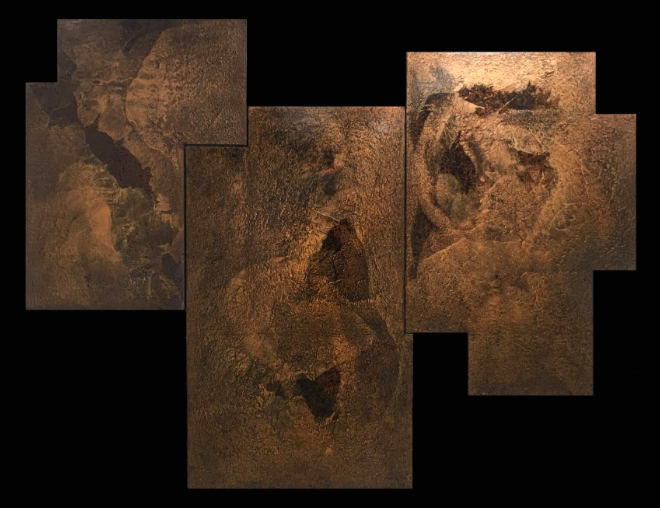
A2Z Art Gallery / « L’âme de la matière » / Kim Chunhwan, Kwak Soo Young / Lee Eu / Moon Chang Dawn / Hoon Moreau / Park Inhyuk / 12.10 – 11.11.2023 / 24 rue de l’Echaudé, Paris 6e
La matière se définit comme l’un des éléments centraux qui constituent plastiquement une œuvre d’art. À une époque où le numérique, le virtuel et l’intelligence artificielle dominent, la distinction dichotomique entre la présence et l’absence, le visible et l’invisible, le matériel et l’immatériel, devient de plus en plus floue. La galerie A2Z Art Gallery vous invite à renouer avec celle-ci dans le cadre de l’exposition « L’Âme de la matière ». La matière peut être l’âme de l’œuvre ; mais la matière peut-elle exister d’elle-même ? Cette exposition collective vous présente les travaux de six artistes coréens dont le sujet principal s’axe autour de la matière : KWAK Soo Young, LEE Eu, KIM Chun Hwan, MOREAU Hoon, MOON Chang Dawn, PARK In Hyuk.
Material is defined as one of the central elements that plastically constitute a work of art. In an age dominated by the digital, the virtual and artificial intelligence, the dichotomous distinction between presence and absence, the visible and the invisible, the material and the immaterial, is becoming increasingly blurred. Galerie A2Z Art Gallery invites you to revisit this distinction with the exhibition « L’Âme de la matière » (The Soul of Material). Material may be the soul of the work, but can material exist on its own? This group show presents the work of six Korean artists whose main subject is material: KWAK Soo Young, LEE Eu, KIM Chun Hwan, MOREAU Hoon, MOON Chang Dawn, PARK In Hyuk.
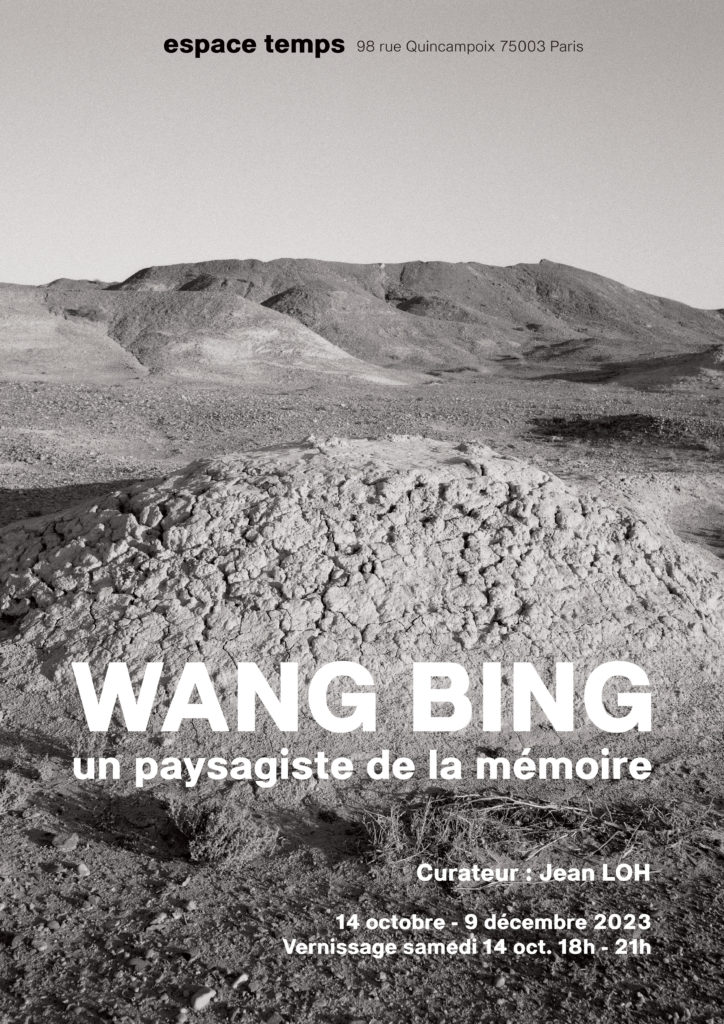
espace-temps / « Un paysagiste de la mémoire » / Wang Bing / 14.10 – 09.12.2023 / 98 rue Quincampoix, Paris 3e
Wang Bing qui est plus connu par ses films et documentaires que par ses photographies, expose pour la première fois des exemples de son travail photographique.
Ses photographies minimalistes démontrent sa maitrise du « temps long », comme s’il avait laissé l’obturateur ouvert, nécessaire à sa plongée dans le noir, à l’opposé de l’instant décisif. Le « temps long » de Wang Bing s’exprime par la durée de ses films qui demandent une projection de de trois heures à neuf heures voire plus. Et ses investigations et recherches prennent souvent plusieurs années. Si Wang Bing pratique une cinématographie de photographe, l’on peut dire qu’il pratique une photographie de cinéma. Il s’agit d’une photographie de respiration, on sent ses inspirations et ses expirations. Malgré l’air souvent irrespirable de ses lieux de tournage ou de prise de vue. Il respire, donc il vit. Et c’est important qu’il enregistre cette mémoire. Ce ne sont que trois séries extraites de l’œuvre déjà immense et monumentale de Wang Bing, mais la descente dans cet espace réduit dans les couloirs et sous-sols (peut-être voisins des catacombes du vieux Paris) de l’ESPACE-TEMPS de Quincampoix se prête parfaitement à propos à notre expérience d’immersion visuelle et corporelle voire émotionnelle du génie humaniste de Wang Bing.
Wang Bing, who is better known for his films and documentaries than for his photographs, exhibits examples of his photographic work for the first time.
His minimalist photographs demonstrate his mastery of “long time”, as if he had left the shutter open, necessary for his plunge into the dark, opposite to the decisive moment. Wang Bing’s « long time » is expressed by the duration of his films which require a screening of from three hours to nine hours or more. And its investigations and research often take several years. If Wang Bing practices photographer’s cinematography, we can say that he practices cinema photography. It is a photograph of breathing, we feel our inspirations and exhalations. Despite the often unbreathable air of his filming or shooting locations. He breathes, therefore he lives. And it’s important that he saves this memory. These are only three series taken from the already immense and monumental work of Wang Bing, but the descent into this reduced space in the corridors and basements (perhaps neighboring the catacombs of old Paris) of ESPACE-TEMPS at Quincampoix lends itself perfectly to our experience of visual, physical and even emotional immersion in the humanist genius of Wang Bing.
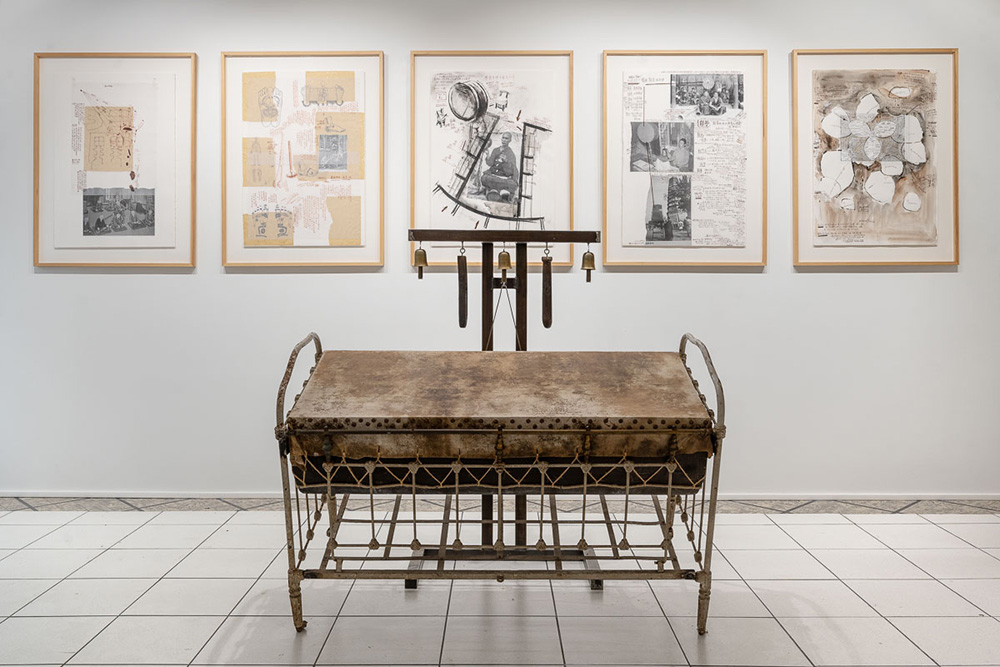
Galleria Continua Paris / « Double Exil » / Chen Zhen / 29.09.2023 – 06.01.2024 / 87 rue du Temple, Paris 3e
L’exposition « Double Exil » invite à une expérience intimiste de l’œuvre de Chen Zhen (1955-2000) et accompagne les visiteurs à la découverte des grands thèmes qui ont occupé l’artiste tout au long de sa vie et qui ont anticipé les complexités socio-politiques d’aujourd’hui.
Lorsqu’il s’installe à Paris, en 1986, Chen Zhen (né en 1955 à Shanghai) expérimente un choc culturel. Il abandonne la peinture et déploie son langage artistique sous la forme d’installations. Il développe alors un concept qu’il nomme «transexpérience»: ce néologisme exprime pour lui l’expérience du dialogue entre les cultures et le processus créatif engendré par le mélange des identités. Chen Zhen interroge ainsi deux situations opposées: celle de l’immigrant et de son intégration dans un nouvel environnement, et celle du nomade et de son inlassable déracinement. Une expérience, celle du double exil, de plus en plus répandue au XXe siècle avec l’accélération des migrations humaines.
The exhibition invites visitors to take an intimate look at Chen Zhen (1955-2000)’s work, and to discover the major themes that preoccupied the artist throughout his life, and which anticipated today’s socio-political complexities.
When Chen Zhen (b.1955 in Shanghai) arrived in Paris in 1986, he experienced culture shock. He gave up painting and developed his artistic language in the form of installations. He developed a concept he called “transexperience”: for him, this neologism expresses the experience of dialogue between cultures and the creative process engendered by the blending of identities. In his work, Chen Zhen examines two contrasting situations: that of the immigrant and his integration into a new environment, and that of the nomad and his relentless uprooting. In other words, it refers to an experience – a double exile – increasingly widespread in the twentieth century with the acceleration of human migration.
ACA project est une association française dédiée à la promotion de la connaissance de l’art contemporain asiatique, en particulier l’art contemporain chinois, coréen, japonais et d’Asie du sud-est. Grâce à notre réseau de bénévoles et de partenaires, nous publions régulièrement une newsletter, des actualités, des interviews, une base de données, et organisons des événements principalement en ligne et à Paris. Si vous aimez nos articles et nos actions, n’hésitez pas à nous soutenir par un don ou à nous écrire.
ACA project is a French association dedicated to the promotion of the knowledge about Asian contemporary art, in particular Chinese, Korea, Japanese and South-East Asian art. Thanks to our network of volunteers and partners, we publish a bimonthly newsletter, as well as news, interviews and database, and we organise or take part in events mostly online or in Paris, France. If you like our articles and our actions, feel free to support us by making a donation or writing to us.
